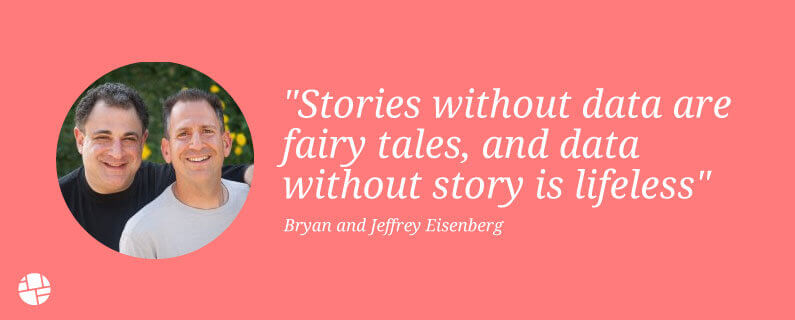Steering by Data: How to Avoid Assumptions and Motivate Your Team
How luxury brand Naked Cashmere combines A/B testing and personalization to provide value for both the customer and business.
Since our founding in 2016, Naked Cashmere, a luxury brand selling sustainably and ethically sourced cashmere products at a fair market rate, has grown amid a rapidly evolving digital landscape. As VP of eCommerce, I attribute some of that success from recognizing early on that we needed to steer clear of our own tastes or biases and focus entirely on the customer.
Our customer base ranges from 25-65+ years old, each segment with unique concerns, preferences, and needs across the different customer journey stages, from brand newcomers to repeat purchasers. Additionally, luxury customers consider products for a long time before purchasing. We need to meet our customer where she is, no matter who she is—and ensure we do it while providing value to both the customer and the business.
To do this, we’ve learned to treat data as our North Star. As an eCommerce team, we run two types of campaigns: those that are internally strategic and those that are customer centric, and designed to drive visitors through the funnel. Each campaign:
- Begins with a hypothesis about user behavior
- Considers the benefit provided to customers
- Matches with a business objective
Achieving greater relevance with A/B testing
One notable example of our data-driven approach involved evaluating the impact of product videos on our product detail pages (PDPs). For example, we thought product videos might create a more compelling, luxury-feeling PDPs experience, showing details and conveying craftsmanship better than static images ever could. We thought that they might build confidence in the customer and help them decide to purchase.
At least, we assumed that—but what did our customers think? And if they did prefer it, would it be worth the video production costs? So we did some A/B testing, placing a video as the first image in galleries for select products. We found that it lifted revenue over static images by 4.7%—or an incremental revenue of hundreds of thousands of dollars annually. This result affirmed the need to invest in video production for our top products and core colors to optimize impact.


We also had an inkling that our customers would prefer an editorial style, so we tested different imagery styles on certain PDPs. While we tend to trend towards clean PLPs for our eCommerce images, we found that lifestyle and outfitting photos did in fact perform overwhelmingly better, leading to a 68% uplift on mobile and a 14% uplift on desktop. This insight helped us extend the life of our creative assets and maximize the value of our investment.


Layering on personalization to meet specific customer needs
These A/B tests helped us optimize our site for the majority of visitors, but that version isn’t always what meets individual customer needs.
As stated before, we have customers who are at different phases of their life. Insights from our customer data platform (CDP) tells us that our empty nest customers start with cardigans, while our 30-year-old customers start with pullovers. On top of this, we also have customers in different phases of their brand relationship, from those just visiting the site for the first time to those who have navigated it regularly for years. We think the site can be more relevant to each of our users, and so we use personalization to get the right product in front of the right customer at the right time.

While traditional eCommerce journeys have started on the homepage and ended up on product pages, the PDP is now the first interaction for many with the brand. This is akin to walking into a store and landing directly in the fitting room. We want to make sure that if the product a customer lands on site with isn’t for them, their journey doesn’t stop there. So we deliver different product recommendation strategies on our PDP to different audience groups.
For new audiences on their first page view, we deliver a “Complete the Look” widget that highlights other products that complement the styling in the image. For visitors who’ve looked at multiple products, we populate a “Recommended for You” widget based on recently viewed products. For returning visitors, this widget shows recommendations by affinity, using a customer’s past preferences and real-time interactions with our brand to recommend items predicted most relevant to them.
Doing this allows us to offer an individualized experience to every visitor—no matter their history with the brand.

In our mini-cart, we also feature a You May Like widget that features three items to improve average order value (AOV) and units per transaction. One slot is pinned with a product that people often buy as an add-on, like a cashmere comb. But the other two feature different algorithms to show other relevant products based on browsing history.

Looking ahead—testing more channels, algorithms, and digital luxury experiences
Experiencing Naked Cashmere should feel like luxury—no matter who, where, or when someone interacts with the brand. We’ve made strides towards this by incorporating data into our decision-making, personalizing the right aspects of the journey, and rigorously testing our hypotheses. While focusing on our website, we’re looking to expand these initiatives to other channels, such as incorporating recommendations into email, breaking down silos to provide a cohesive experience that emphasizes our brand’s craftsmanship and values.
Additionally, we’re beginning to A/B test not only UX elements, but algorithms as well. We already use different recommendation strategies on our PDP to different audience groups, but how can we be sure those recommendations are the right fit for each segment? We can go a step further A/B testing our algorithms to ensure the best performing variation for each audience group and learning even more about the nuances within. For example, while the majority of loyal customers might prefer a “Recommended for You” widget that features recommendations based on their affinity profile, some might actually want to discover products totally outside of their own previous tastes. We can convert this “losing” test into additional personalization opportunities, dividing our audiences into more meaningful segments based on previously uncovered shared characteristics and generate the best performance for more users.
In all, we want to create a strong first brand impression, exhibit our values, and ensure that if the product doesn’t fit the customer, that their journey doesn’t end there. We believe the right experiences will not only evoke a high click-through rate (CTR), but will also emphasize luxury and craftsmanship and put the brand in a strong light. Content—the details of the product and craftsmanship—connotes luxury, and much of that can get lost in product grids. To accomplish all of this, we’ve allowed customer data to decide for us rather than just relying on our personal preferences.

 How Deep Learning is Adding Predictive Personalization Prowess to User Affinity Profiling
How Deep Learning is Adding Predictive Personalization Prowess to User Affinity Profiling


